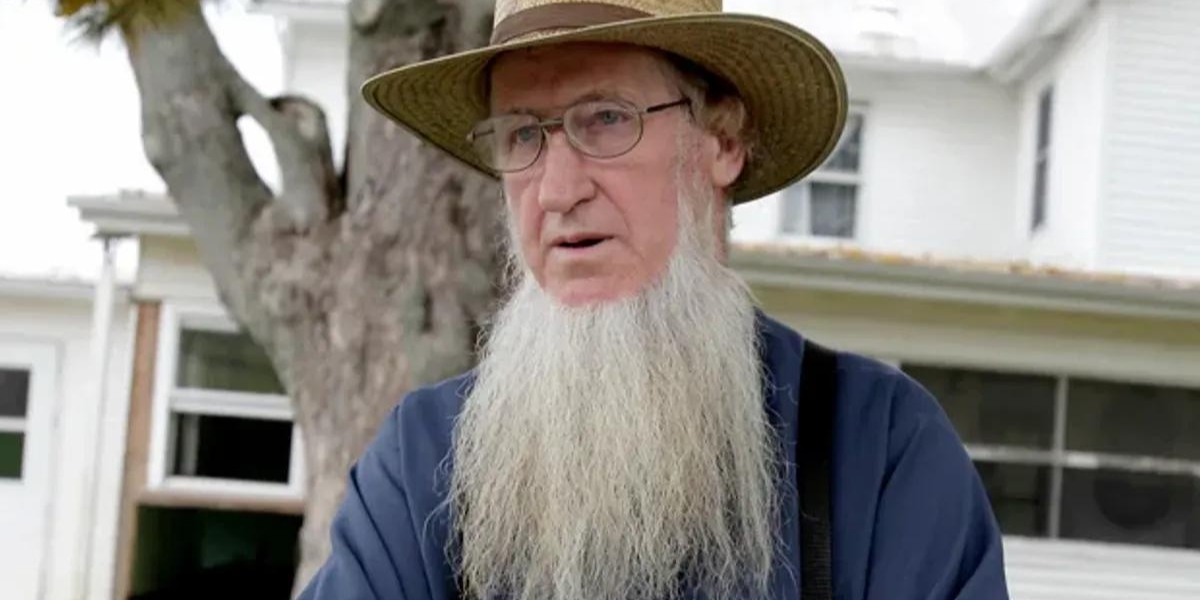 Introduction
Introduction
Have you ever driven through Amish country or stopped to indulge in a hearty meal at one of their renowned restaurants? If so, you’ve likely seen the distinctive sight of horse-drawn buggies and men with long, mustache-less beards. These beards, a hallmark of the Amish community, carry deep significance beyond mere appearance Amish Beard Meaning Style.
The Amish Beard: More than Just a Fashion Statement

The Amish beard often referred to as a Shenandoah beard among other names like the chin curtain or the Lincoln, is a testament to lifelong commitment rather than a fashion choice. Unlike typical beards the Amish beard does not include a mustache or a soul patch—the hair beneath the lower lip—remaining completely clean-shaven around the mouth.
Why No Mustache?
The absence of a mustache stems from historical roots. During the 19th and early 20th centuries, mustaches were associated with military service in Europe. In opposition to militarism and as a symbol of their commitment to pacifism, the Amish community chose to shave their mustaches. This distinctive facial hair became a form of peaceful protest, emphasizing their separation from military traditions.
Symbol of Marriage and Commitment
Interestingly, not every Amish man wears a beard. The Amish beard is a marker of marital status; only married men, including widowers, grow and maintain these beards. In Amish culture, wearing a beard signifies a commitment to family and community, akin to a wedding ring in mainstream culture. It symbolizes maturity, responsibility, and leadership within the household.
Distinctive Features of the Amish Beard
Unlike other beard styles like the chinstrap, which is shorter and less substantial, the Amish beard is grown long, typically at least six inches in length. It starts from the jawline, includes straight sideburns extending to the ears, and is neatly groomed with shaved cheeks. This unique style not only reflects tradition but also enhances facial features, making it a popular choice for those seeking a distinguished look.
Benefits of Sporting an Amish Beard
Choosing to grow an Amish beard offers several practical benefits:
- It requires minimal grooming once established.
- It complements various face shapes, softening angular features and elongating rounder faces.
- The absence of a mustache emphasizes the fullness and thickness of the beard.
- It prevents food and drink from getting caught around the mouth, offering convenience and cleanliness.
- Beyond aesthetics, it serves as a visible commitment to peace and humility, ideals deeply cherished within Amish culture.
Considerations for Growing an Amish Beard
If you’re considering adopting an Amish beard style, the process begins with allowing your facial hair to grow into a thick stubble. Using trimmers, you’ll define boundaries along the jaw and chin, shaving everything above these lines including the cheeks and soul patch. Regular maintenance with beard oil and a quality beard brush ensures a neat appearance and soft texture.
Cultivating Your Own Amish Style Beard
If you’re intrigued by the Amish beard and considering growing one yourself, here’s how you can cultivate this distinctive style:
Growing Your Beard
- Initial Growth: Begin by letting your facial hair grow freely for a month or two to achieve a good, thick stubble.
- Trimming Boundaries: Use trimmers to establish clear boundary lines along your jawline and front of the chin. Shave everything above these boundaries, including your cheeks and the soul patch (hair beneath the lower lip).
- Neck Area: Optionally, define a lower boundary around the level of your Adam’s apple and shave your neck below that line.
Maintenance Tips
- Cleansing and Grooming: Regularly cleanse your beard with a nourishing beard wash every few days. Apply beard oil daily to keep it soft and manageable, and use a boar’s hair beard brush to maintain its shape.
- Shaving: Keep the areas around your mouth and cheeks clean-shaven for a tidy appearance.
- Trimming: Use beard trimmers to maintain even length and shape, touching up your beard every few days as needed.
Style Ideas
When it comes to styling your Amish beard, consider these options:
- Classic Chin Curtain: Let your beard grow long and straight from the jawline, maintaining a clean-shaven upper lip and cheeks.
- Forked End: Experiment with shaping the end of your beard into a forked or double-ended style for added flair.
- Tapered Jawline: Trim and taper the beard along your jawline, enhancing its structure while maintaining length towards the chin.
- Incorporating Stubble: For a modern twist, allow some stubble to grow on your cheeks and upper lip while keeping the chin curtain long and well-groomed.
Conclusion
Embracing an Amish style beard not only reflects a distinctive appearance but also carries deep cultural and personal significance. Whether its simplicity, symbolism, or practical benefits draw you, cultivating and maintaining an Amish beard can be a rewarding choice.
FAQs About Amish Style Beards
Q1: Can anyone grow an Amish style beard?
A: Yes, anyone can grow an Amish style beard if they allow their facial hair to grow long from the jawline without a mustache and maintain clean-shaven cheeks and upper lip.
Q2: How long does it take to grow an Amish beard?
A: It typically takes a few months to grow an Amish beard to a substantial length, with regular trimming and grooming.
Q3: What grooming products do experts recommend for an Amish beard?
A: Beard oil, beard wash, and a quality beard brush are essential for cleansing, softening, and shaping the beard.
Q4: Why do Amish men not have mustaches?
A: Historically, the Amish rooted the absence of a mustache in their pacifist beliefs and desire to distinguish themselves from military traditions.
Q5: What does an Amish beard symbolize?
A: An Amish beard symbolizes maturity, marital status, commitment to family, and adherence to cultural and religious traditions.

